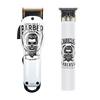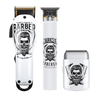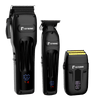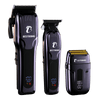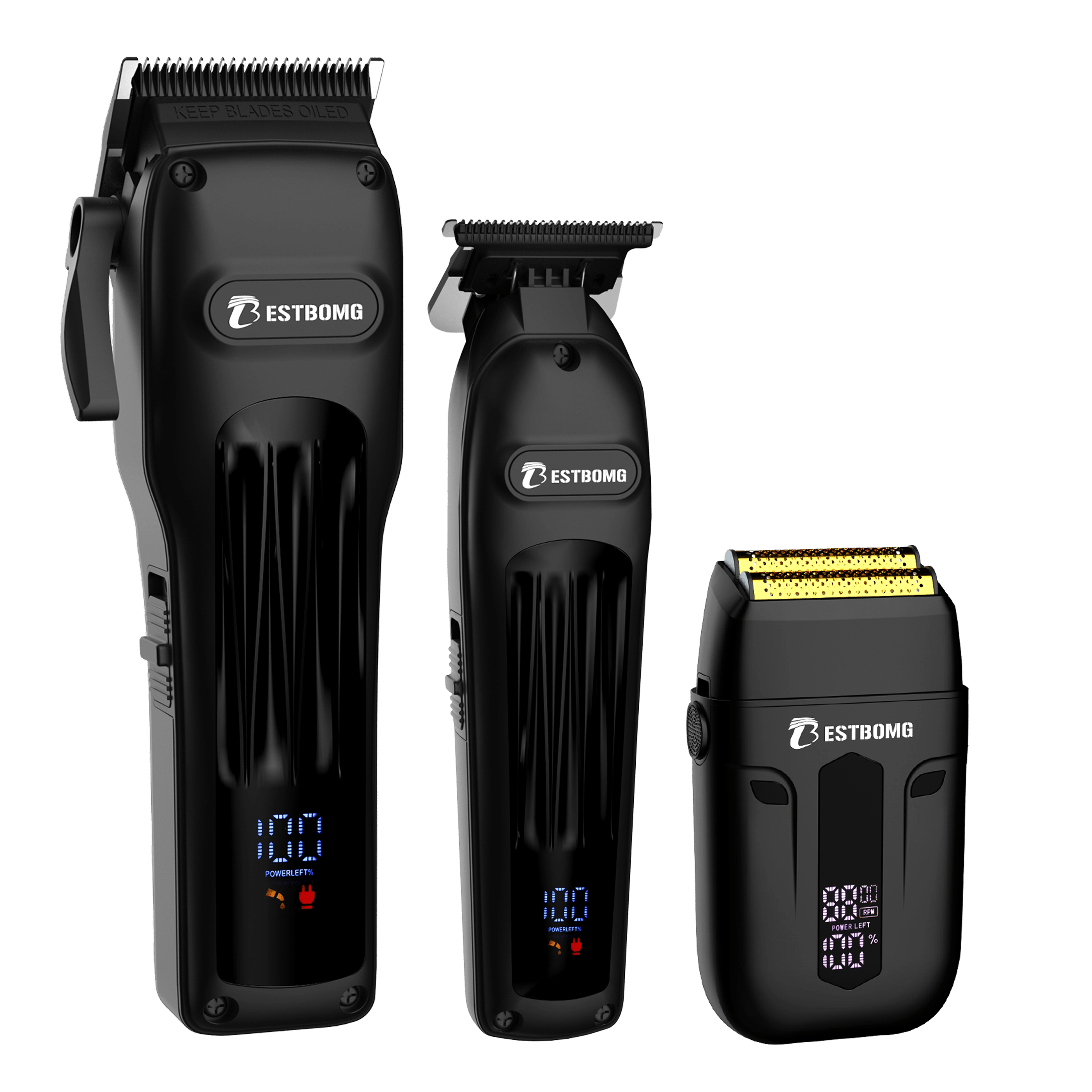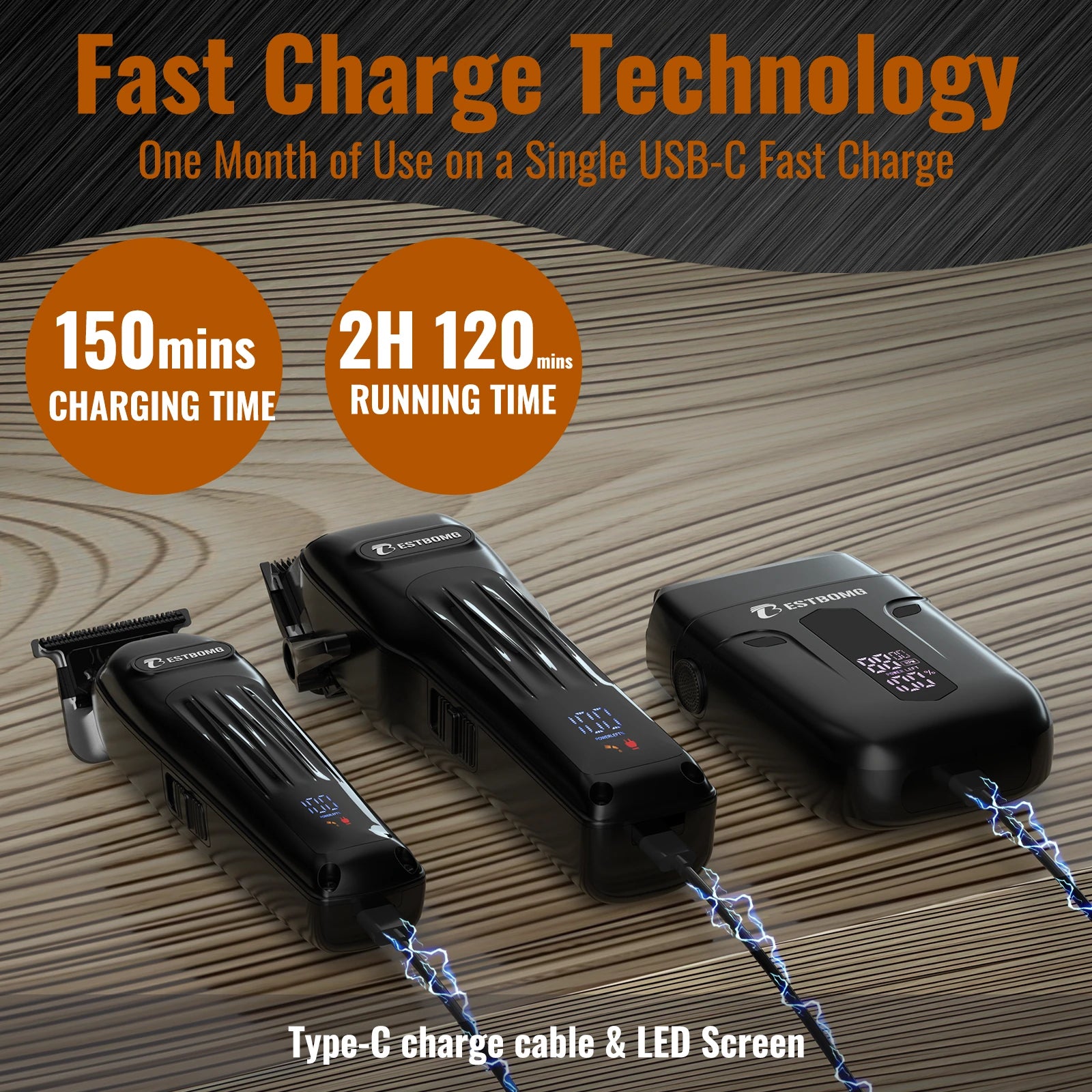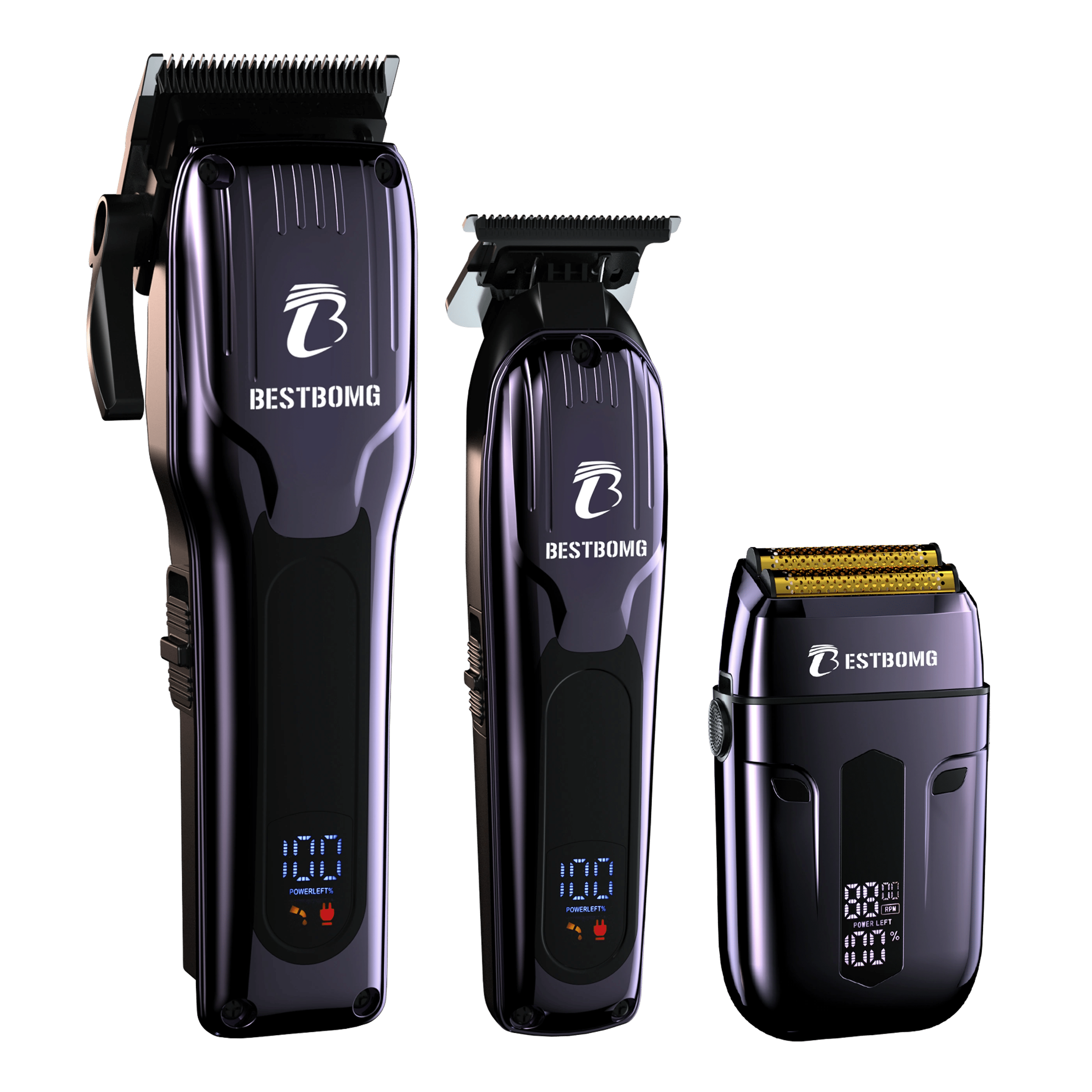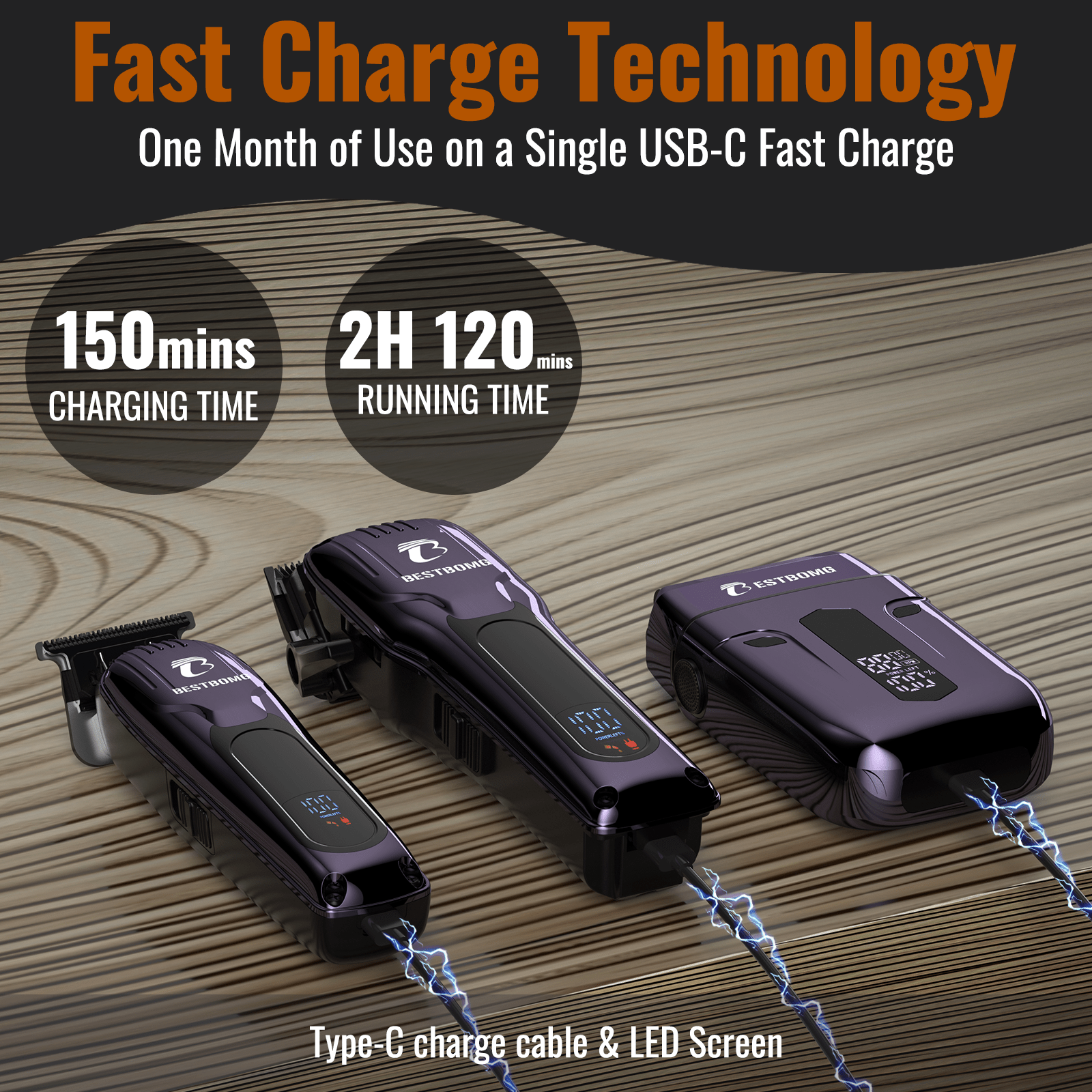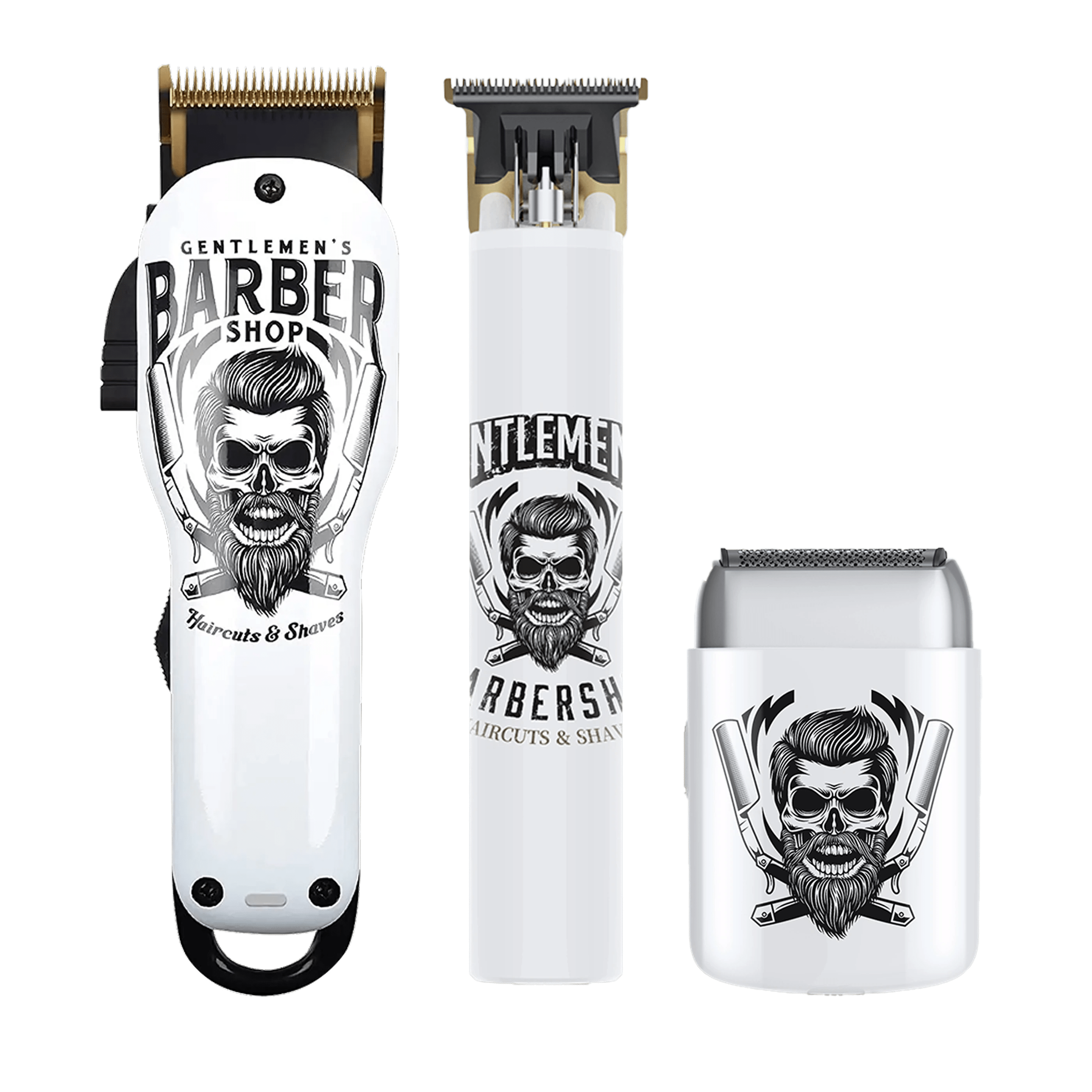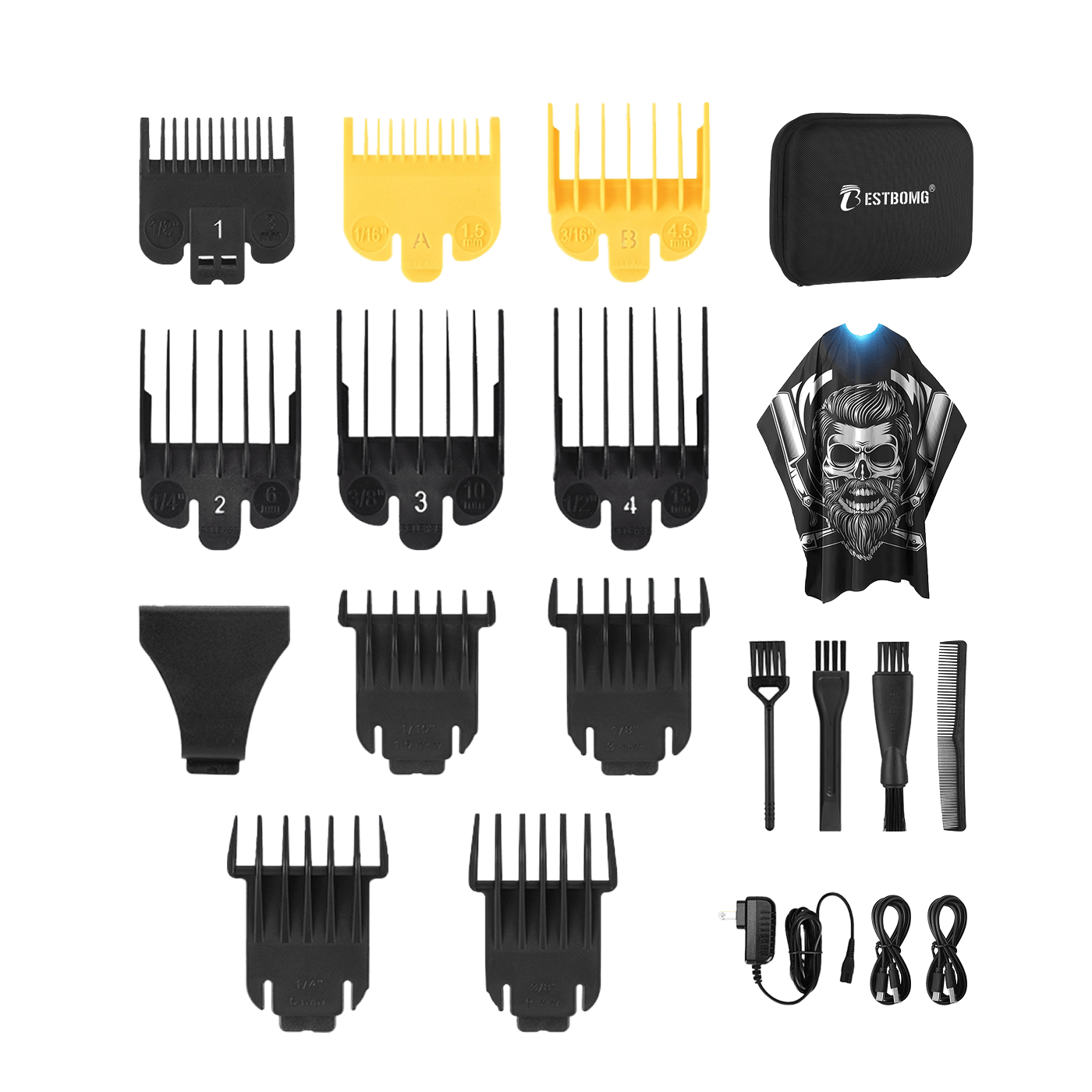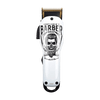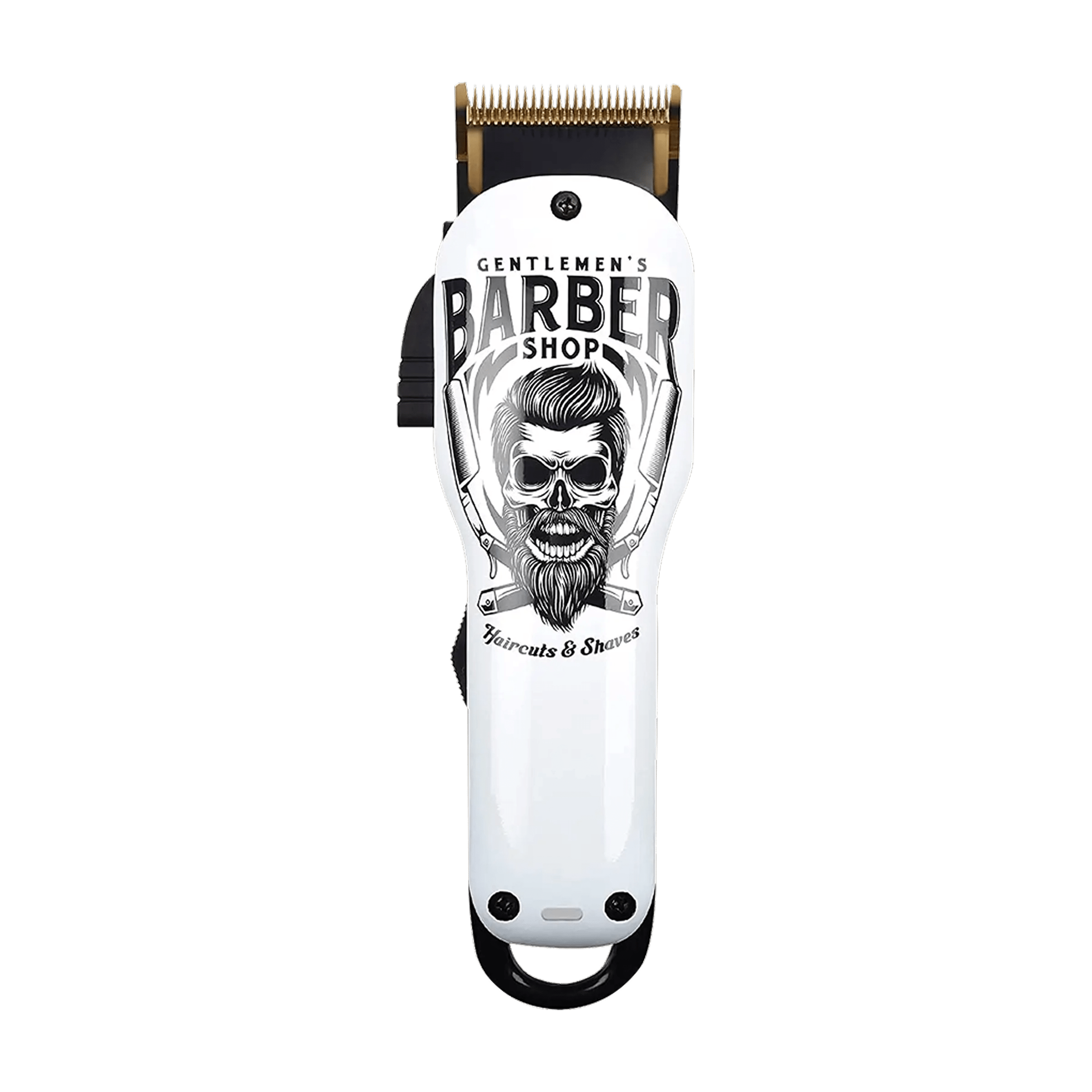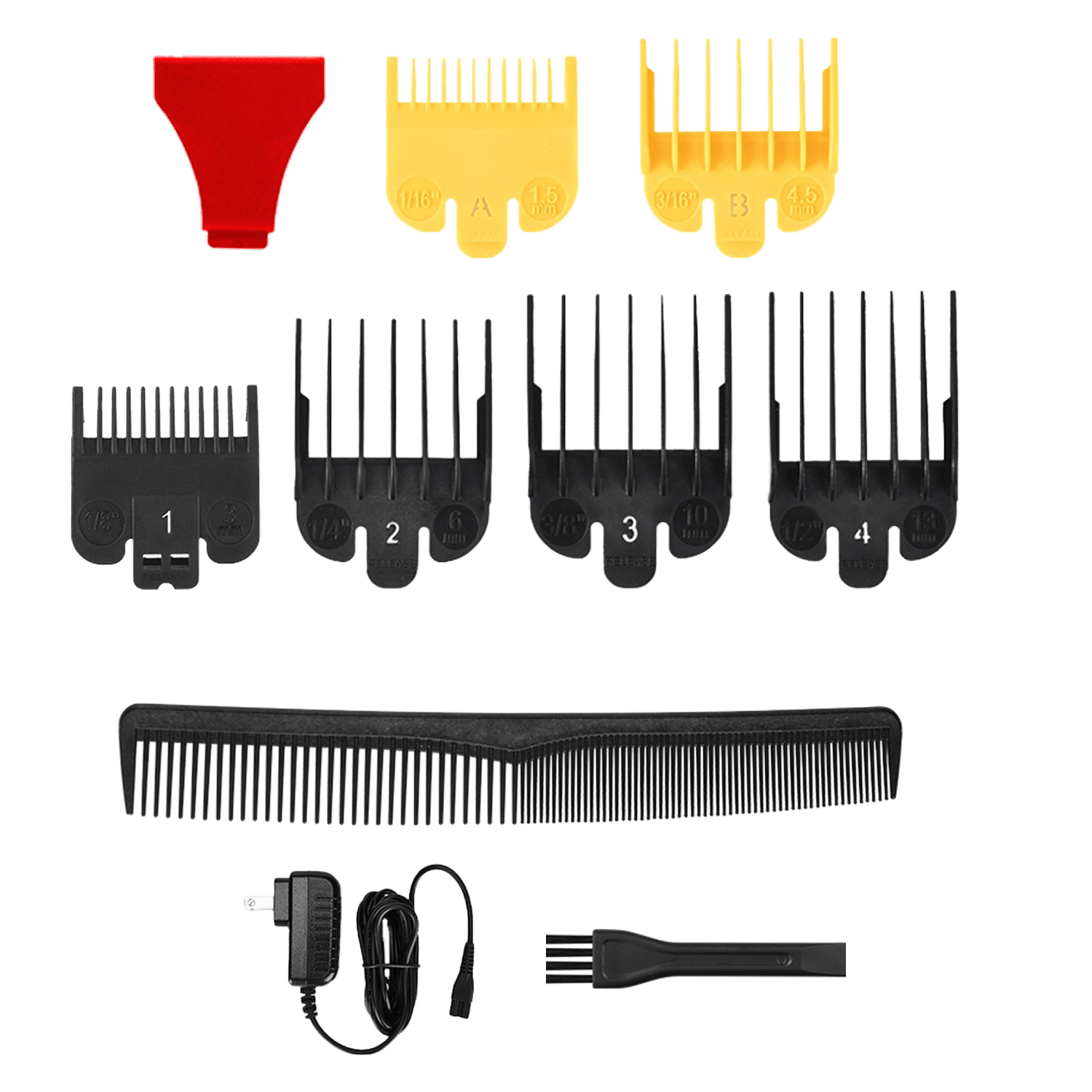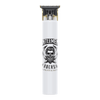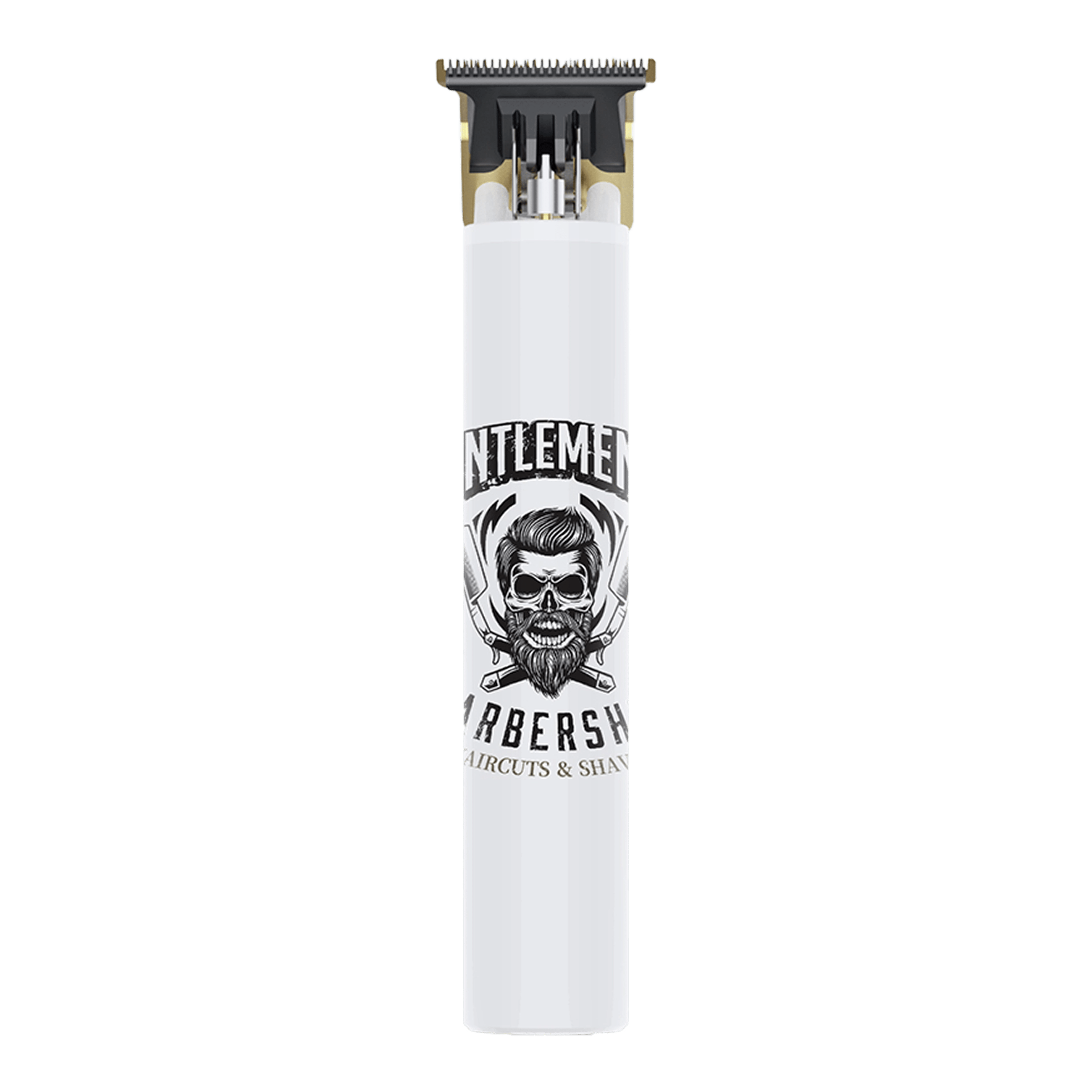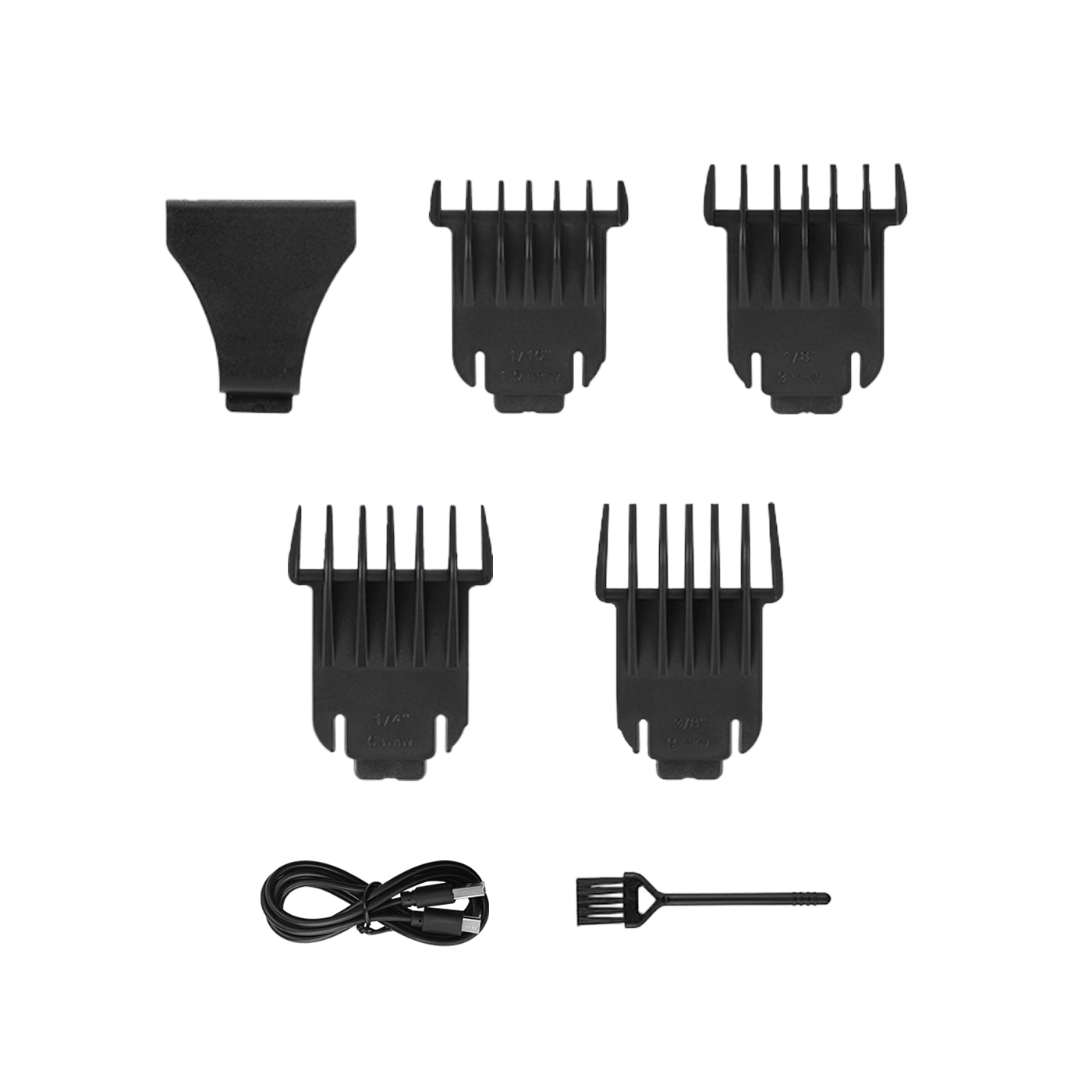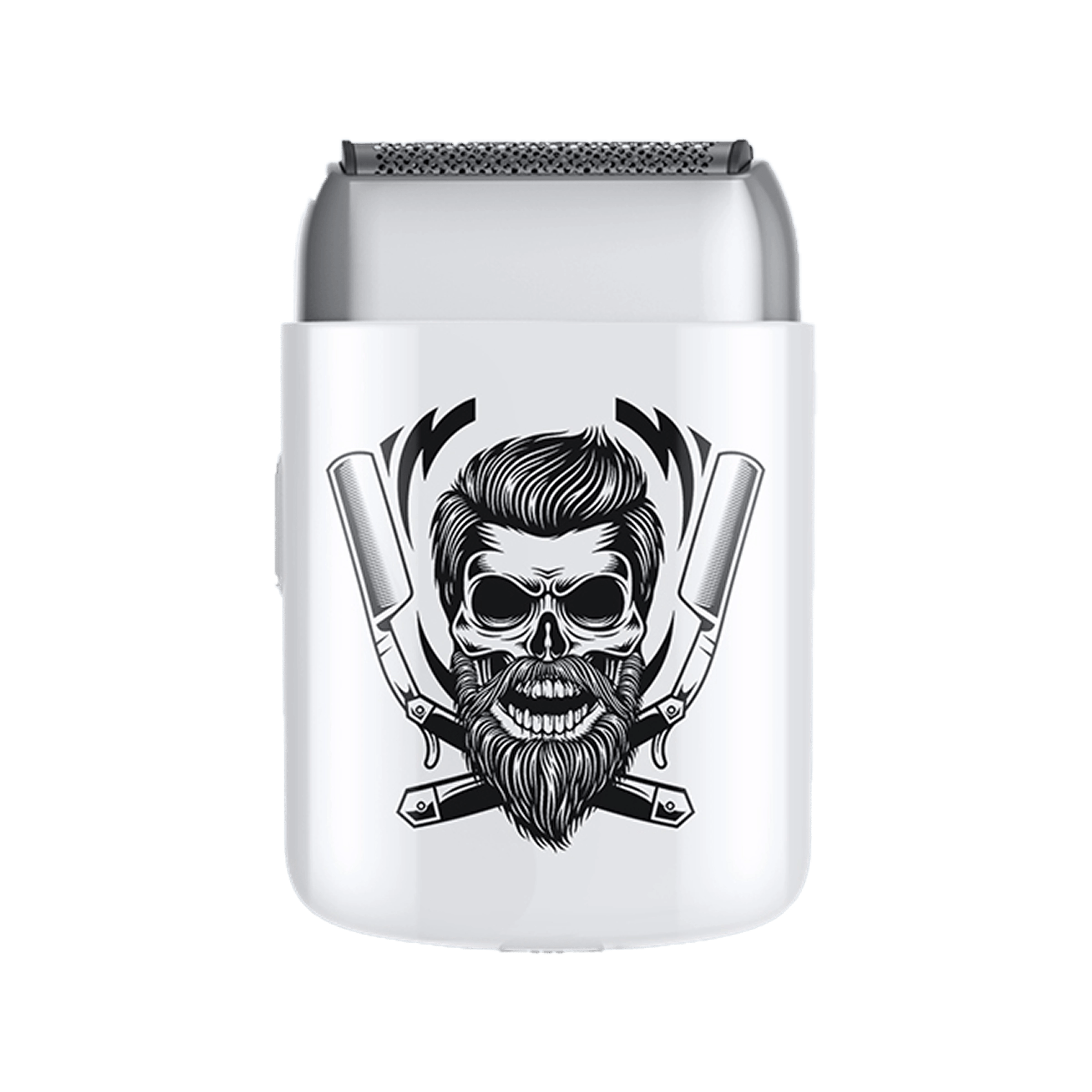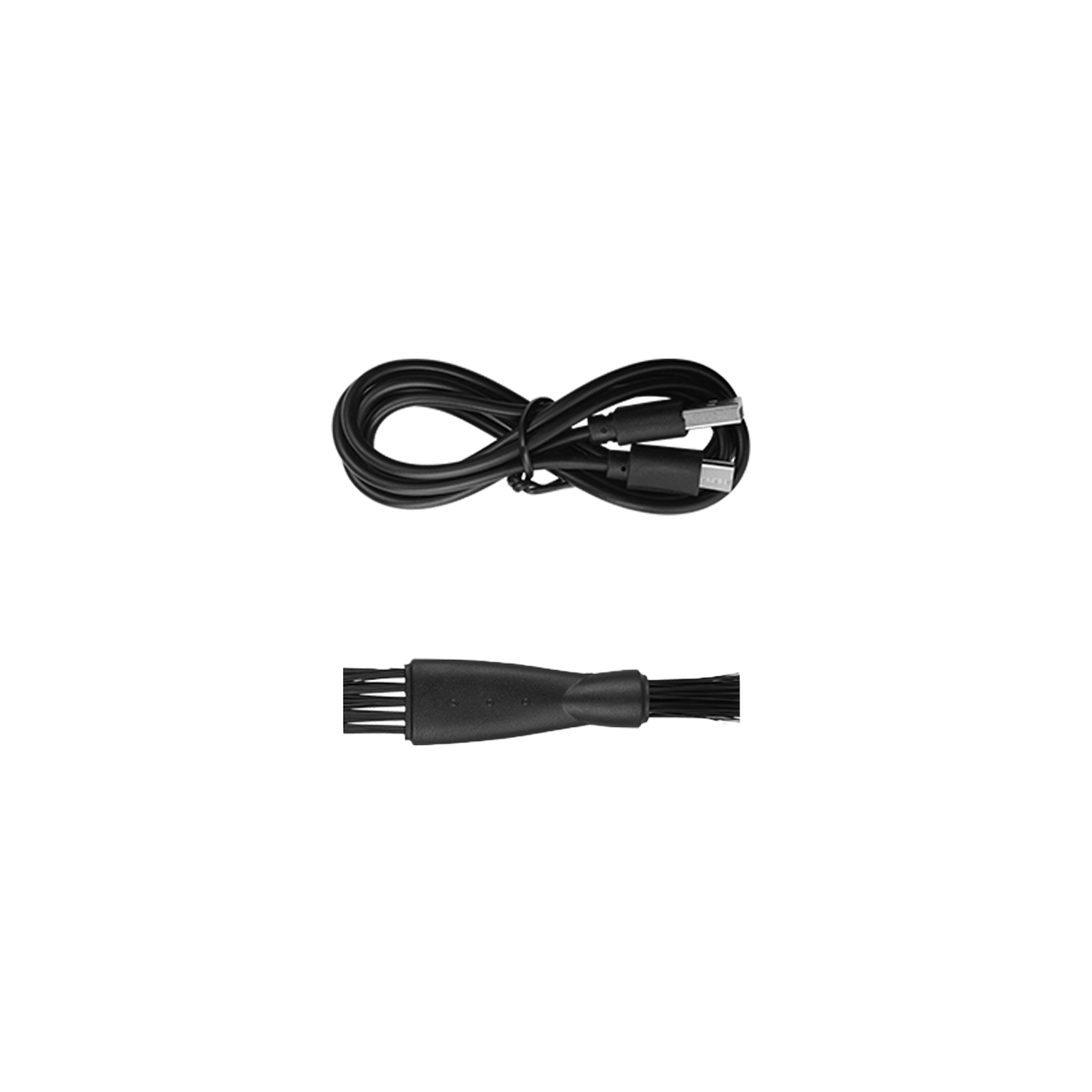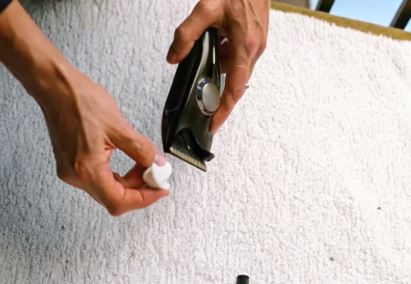The lever on hair clippers is a taper lever that adjusts the cutting length between guide comb sizes. Moving the lever up gives you the shortest cut, while moving it down gives you a longer cut. This small but powerful feature helps you customize haircuts, create smooth fades, and blend different hair lengths without constantly changing guards.
Understanding How the Taper Lever Works
The taper lever physically moves the top cutting blade forward or backward, changing the gap between the two blades.
When you slide the lever, you're adjusting how much of the bottom blade's teeth are exposed. This changes the cutting length by tiny increments—usually about half a guard size.
Lever positions:
- Lever up (closed): Blades closer together, shortest cut possible with that guard
- Lever down (open): Blades further apart, longer cut with more hair left behind
Understanding how hair clipper blades work and the blade mechanism makes the taper lever's function clearer. The two blades oscillate past each other like scissors, and adjusting their overlap changes cutting length.
What Does the Little Lever on Hair Clippers Do?
The taper lever allows you to change the closeness of your cut between guide comb lengths without switching guards.
This is especially useful when creating fades and tapers. Instead of switching between a #2 and #3 guard repeatedly, you can use a #2 guard and adjust the lever to get five or six different lengths in that range.
Key functions:
- Creates smooth transitions between different hair lengths
- Helps blend fade lines seamlessly
- Saves time by reducing guard changes
- Allows for more precise length control
Professional barbers rely heavily on the taper lever for their signature smooth fades. Quality professional hair clippers include this feature for versatile cutting options.
Should the Lever Be Open or Closed on Hair Clippers?
Start with the lever in the open position (down) for a longer, safer cut. This prevents accidentally cutting too short.
Once you've established your base length, you can close the lever (move it up) to gradually blend and fade shorter sections.
When to use each position:
- Open/down: Initial passes, maintaining length, blending into longer sections
- Closed/up: Creating shorter sections, tightening fades, detailing edges
- Middle positions: Fine-tuning transitions and creating gradual blends
The beauty of the taper lever is that you can adjust it mid-stroke for even smoother gradients. Start a stroke with the lever closed, then gradually open it as you move up the head.
Does Lever Up or Down Cut More Hair?
Lever up (closed position) cuts more hair off, leaving less length. Lever down (open position) cuts less hair off, leaving more length behind.
Think of it this way: closing the lever (moving it up) brings the blades closer together, creating a tighter cut similar to moving down a guard number. Opening the lever (moving it down) separates the blades slightly, creating a longer cut similar to moving up a guard number.
Quick reference:
- Lever up = closed = shorter = cuts more
- Lever down = open = longer = cuts less
This can feel counterintuitive at first because the lever moves up to cut shorter. Just remember: up means tight/close/short, down means loose/open/long.
How to Use the Taper Lever for Fading
The taper lever is essential for creating professional-looking fades with smooth transitions.
Basic fading technique:
- Start with your shortest guard (#1 or #2) on the lower sides and back
- Keep the lever closed (up) for the initial short section
- As you approach the transition area, gradually open the lever while moving upward
- Switch to your next guard size up (#2 or #3)
- Start with lever open, gradually close it as you work into already-cut hair
- Repeat the process for each transition zone
Advanced blending:
Use the lever to create 3-4 micro-lengths within each guard size. For example, with a #2 guard, you can create lengths equivalent to #1.5, #2, #2.25, and #2.5 just by adjusting the lever.
Complete all-in-one hair cutting kits include the guards and tools needed to master these techniques.
Using the Taper Lever to Clear Jammed Blades

If your blades ever become jammed with hair, the taper lever provides a quick fix.
Clearing blade jams:
- Stop cutting and turn the clippers off
- Move the lever up and down several times rapidly
- This action will help free the blades by loosening trapped hair
- Turn the clippers back on and move the lever a few more times
- Brush the blades with the small brush accessory to remove hair
This is one of the lever's most practical functions. Hair can get packed between the blades during heavy use, especially when cutting thick or wet hair. The lever movement creates space that helps dislodge debris.
Oiling Your Clipper Blades with the Taper Lever
The taper lever also helps distribute oil evenly across the blades during maintenance.
Proper oiling technique:
- Remove the guards and brush away any hair
- Turn the clippers on
- Apply 2-3 drops of clipper oil across the blade teeth
- Move the taper lever up and down several times while the clipper runs
- This works the oil into all the blade contact points
- Let the clippers run for 5-10 seconds
- Wipe off excess oil with a clean cloth
Oiling the blades reduces friction and keeps them from pulling and snagging. Regular maintenance prevents issues like those described in guides on preventing skin irritation from dull blades from dull blades.
Quality precision beard trimmers also feature taper levers for precise facial hair styling.
Taper Lever vs Changing Guards
Both the taper lever and guard changes adjust cutting length, but they work differently and serve different purposes.
Taper lever advantages:
- Makes micro-adjustments within a guard's range
- Faster than constantly swapping guards
- Perfect for blending and fading
- Allows gradual length changes mid-stroke
Guard change advantages:
- Makes larger length jumps (1/8 inch increments)
- More predictable, consistent lengths
- Better for uniform cuts without gradients
- Easier for beginners to control
Best practice:
Use guards to establish your main sections and overall lengths. Use the taper lever to blend between those sections and create smooth transitions. This combination gives you the most control and versatility.
Common Taper Lever Mistakes to Avoid
Understanding what not to do helps you master the lever faster.
Don't forget to adjust it back: Many people cut an entire section with the lever in the wrong position because they forgot to reset it. Check the lever position before each new section.
Don't move it too fast: Rapid lever adjustments during cutting can create choppy, uneven results. Make smooth, gradual movements for seamless blends.
Don't skip oiling: The lever mechanism needs lubrication just like the blades. When you oil your clippers, move the lever through its full range to distribute oil to the adjustment mechanism.
Don't force a stuck lever: If the lever feels stuck or difficult to move, there's likely hair buildup in the mechanism. Clean the clippers thoroughly before forcing anything that could damage the adjustment system.
Frequently Asked Questions
What does the little lever on hair clippers do?
The little lever on hair clippers is a taper lever that adjusts the cutting length between guard sizes. Moving the lever changes the blade gap, letting you cut hair slightly shorter (lever up/closed) or slightly longer (lever down/open) without changing guards. It's essential for creating fades and smooth transitions.
Should the lever be open or closed on hair clippers?
Start with the lever open (down) for a longer, safer cut, especially when establishing your base length. Close the lever (move it up) when you want to cut shorter or create tighter fades. You can adjust it mid-stroke to create gradual blends—start closed and gradually open as you move upward.
Does lever up or down cut more hair?
Lever up (closed) cuts more hair off and leaves less length behind. Lever down (open) cuts less hair off and leaves more length. Think of it this way: moving the lever up tightens the blade gap for a closer cut, while moving it down loosens the gap for a longer cut. The direction can feel backwards at first—just remember "up = short, down = long."
What is the lever level on hair clippers?
The lever level refers to the taper lever's position along its range of motion. Most professional clippers don't just have two positions (open/closed) but allow you to set the lever anywhere in between for precise length control. This means you can achieve 5-6 different cutting lengths with a single guard just by adjusting where you position the lever.
Is the lever open down or up?
The lever is open when positioned down and closed when positioned up. Open (down) creates more space between blades for longer cuts. Closed (up) brings blades closer together for shorter cuts. If you're coming from the bottom of the head upward, start with the lever closed (up) at the shortest section, then gradually push it down (open) as you move toward longer hair.
Why do some clippers have a lever?
Professional and mid-range clippers include a taper lever because it's essential for creating fades and blends without constantly swapping guards. Budget clippers skip this feature to reduce manufacturing costs, but the lever saves significant time and improves cutting precision. Barbers consider it a must-have feature—without it, you'd need twice as many guards to achieve the same results.
Read more
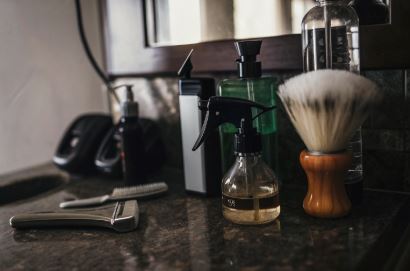
How to Disinfect Hair Clippers: A Complete Guide
To disinfect hair clippers, you must first clean them thoroughly, then use a specialized blade spray, an alcohol soak, or a sanitizing solution like Barbicide. A final oiling step is essential to p...
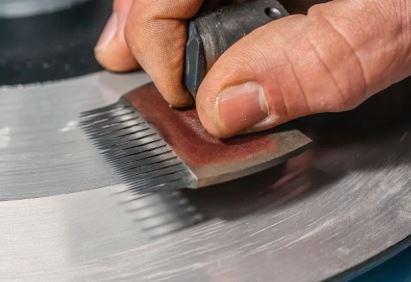
Can You Sharpen Hair Clippers? Simple DIY Guide
Yes, you can sharpen hair clippers at home with basic tools. You don't need expensive equipment—just sandpaper, a flat surface, and about 15 minutes. Sharp blades cut cleanly without pulling. Dull ...
